Potatoes Au Gratin
This post may contain affiliate links. Read my full disclosure policy.
Creamy, cheesy, and indulgent, this potatoes au gratin recipe is perfect for holiday meals or any dinner that calls for something special.
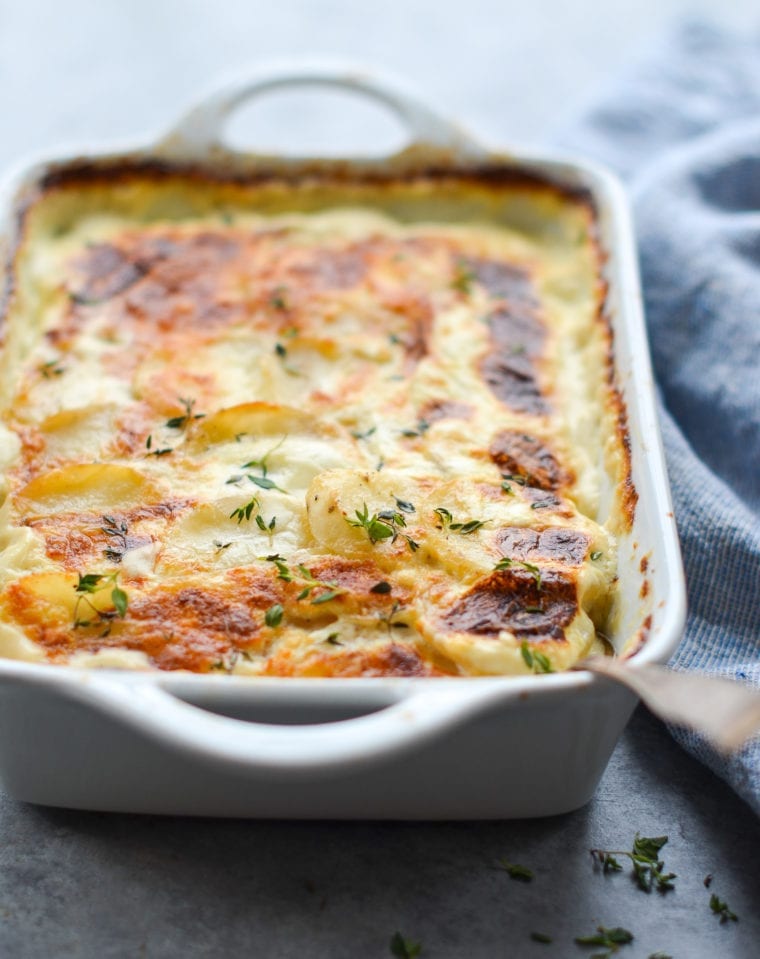
This wonderful classic potatoes au gratin recipe is one of my go-to Thanksgiving side dishes, but it’s also perfect for any special dinner. It involves layering thinly sliced potatoes with heavy cream and grated cheese in a casserole dish, and then baking until the cream thickens and blankets the potatoes in a rich, creamy sauce. This dish is definitely worthy of a special occasion, but honestly, enjoying this au gratin potatoes recipe feels like a special occasion all on its own.
“I only gave this five stars because I couldn’t give it 10 stars. This may be my favorite side dish ever. It is amazing!”
What You’ll Need To Make Potatoes Au Gratin
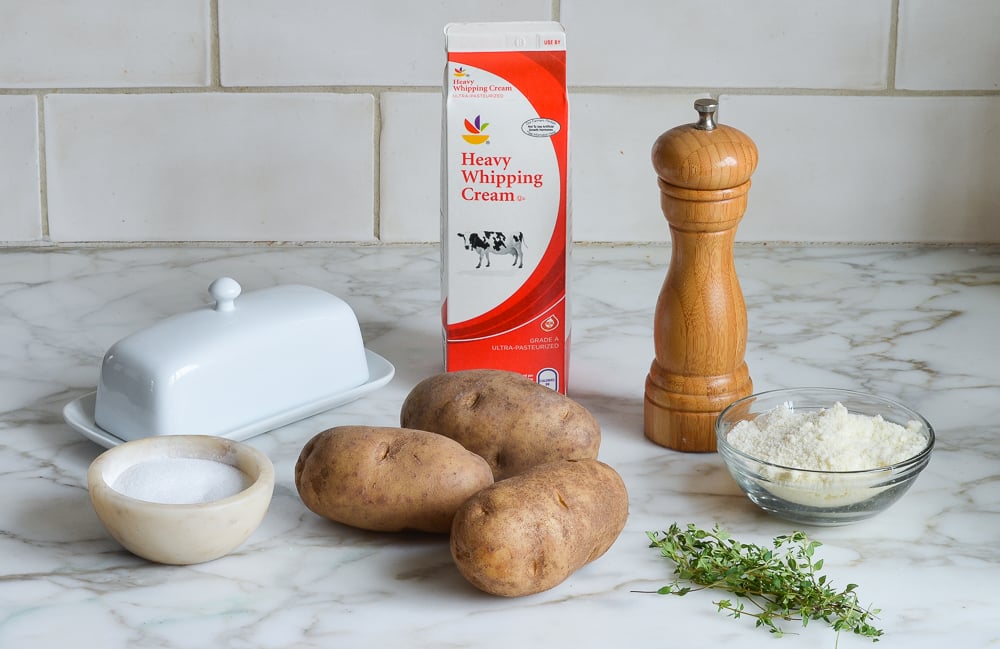
- Russet Potatoes: Their high starch content makes them ideal for absorbing the cream and creating a soft, melt-in-your-mouth consistency. Russet potatoes are also ideal for making mashed potatoes, baked potatoes, and twice-baked potatoes. Yukon gold potatoes are not recommended.
- Salt: Enhances the natural flavors of the potatoes and balances the richness of the cream and cheese.
- Black Pepper: Adds a mild, warming heat that complements the creamy, cheesy layers.
- Finely Grated Parmigiano-Reggiano: Provides a salty, nutty depth that melts into the potatoes, adding flavor and texture. Be sure to use authentic Parmigiano Reggiano (not cheese labeled as Parmesan), which can be identified by its rind or labeling. If it’s unavailable, Pecorino Romano is a flavorful substitute.
- Heavy Cream: Creates the velvety sauce that makes this dish creamy and indulgent. You may be tempted to cut calories by using half & half or milk instead of cream. Please don’t! This is one of those recipes that requires heavy cream to thicken up.
- Fresh Thyme (Optional): Adds a hint of herbal freshness to balance the rich, creamy flavors.
- Jump to the printable recipe for precise measurements
Step-by-Step Instructions
Begin by slicing the potatoes as thinly and uniformly as possible. You can use a mandoline slicer if you have one, but I never bother. (Pro tip: When slicing wobbly potatoes, it helps to cut a thin slice along the length of the potato, then turn the potato cut-side down on a cutting board so that it sits flat.)
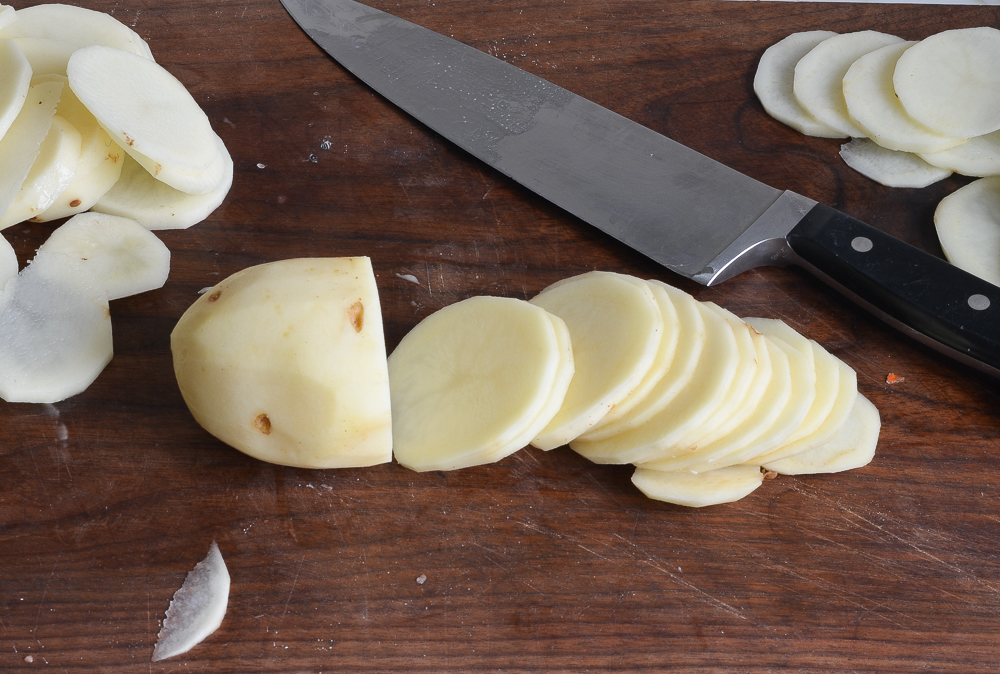
Place the potatoes in a large bowl and toss with the salt and pepper. Be sure the potatoes are evenly coated.
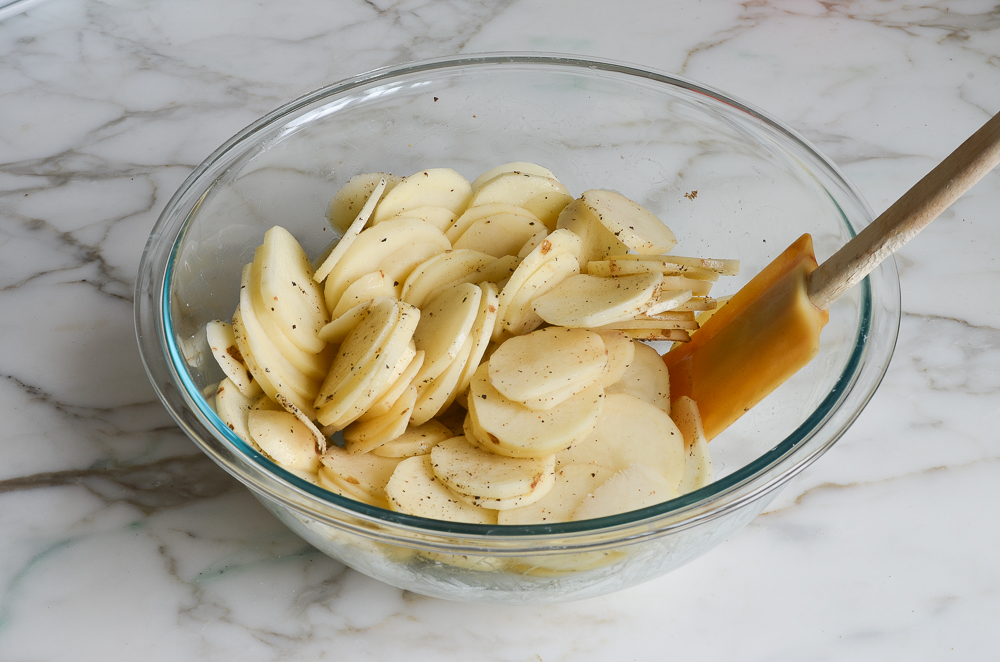
Butter a 2-quart baking dish. Arrange some of the potato slices, edges overlapping, in a single layer on the bottom of the dish.
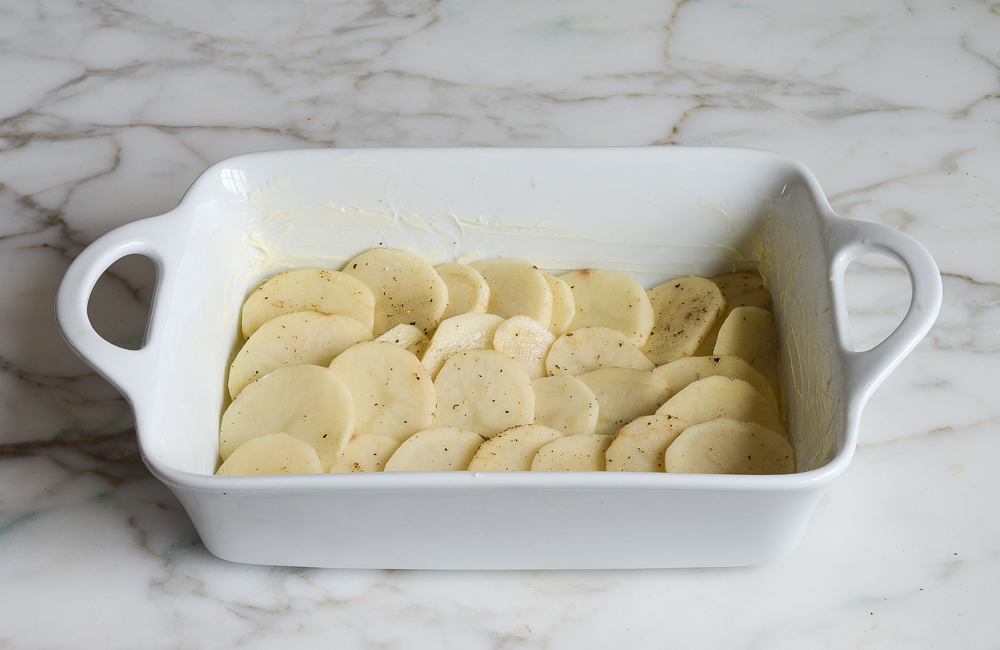
Sprinkle a quarter of the cheese over the potatoes.

Pour a quarter of the cream over top.
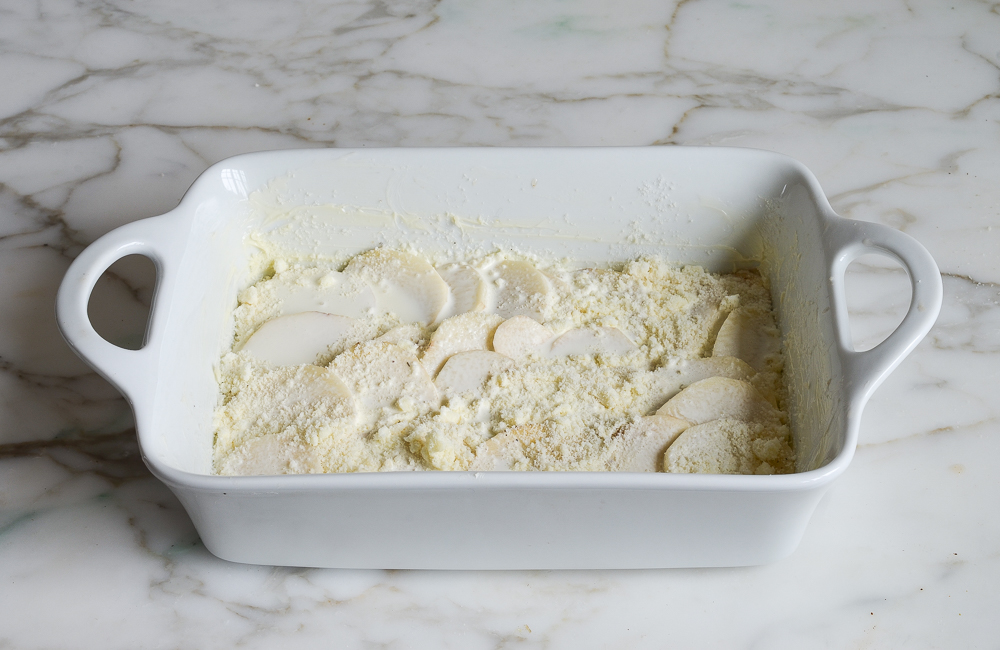
Repeat with the remaining potatoes, cheese, and cream, forming four layers. Pour any leftover cream over top.
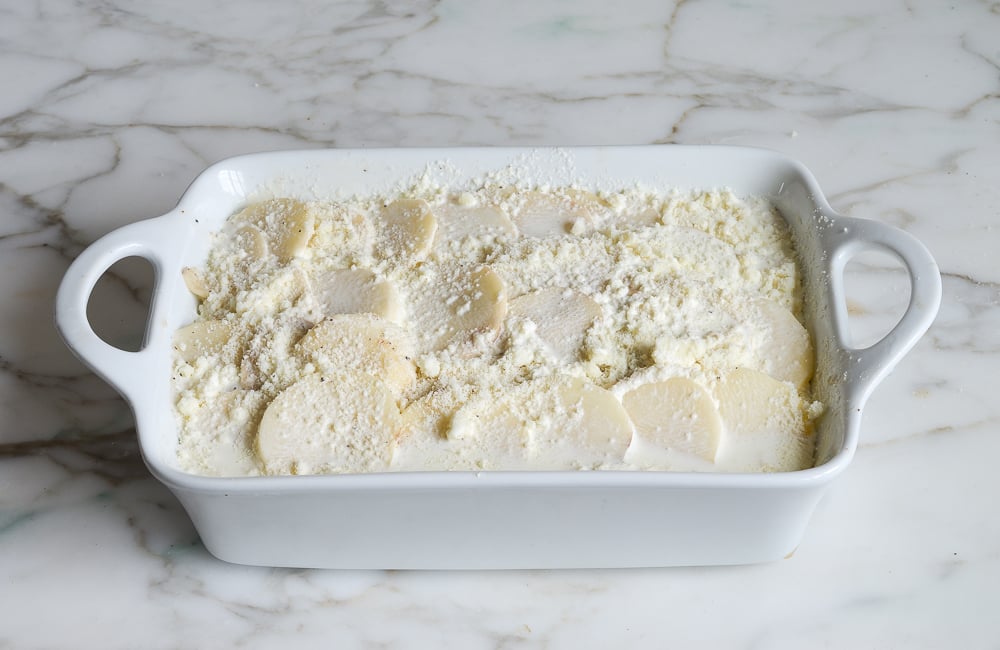
Place in the preheated oven and bake, uncovered, for 60 to 75 minutes, or until the potatoes are tender when pierced with a knife and golden brown on top. (Don’t cover the dish with foil or you won’t get the beautiful coloring on top.) The top layer of the potatoes should be golden by the time the dish is done baking but if you want just a bit more browning, feel free to stick the baking dish under the broiler for 1 to 2 minutes; just keep a close eye on it so it doesn’t burn.
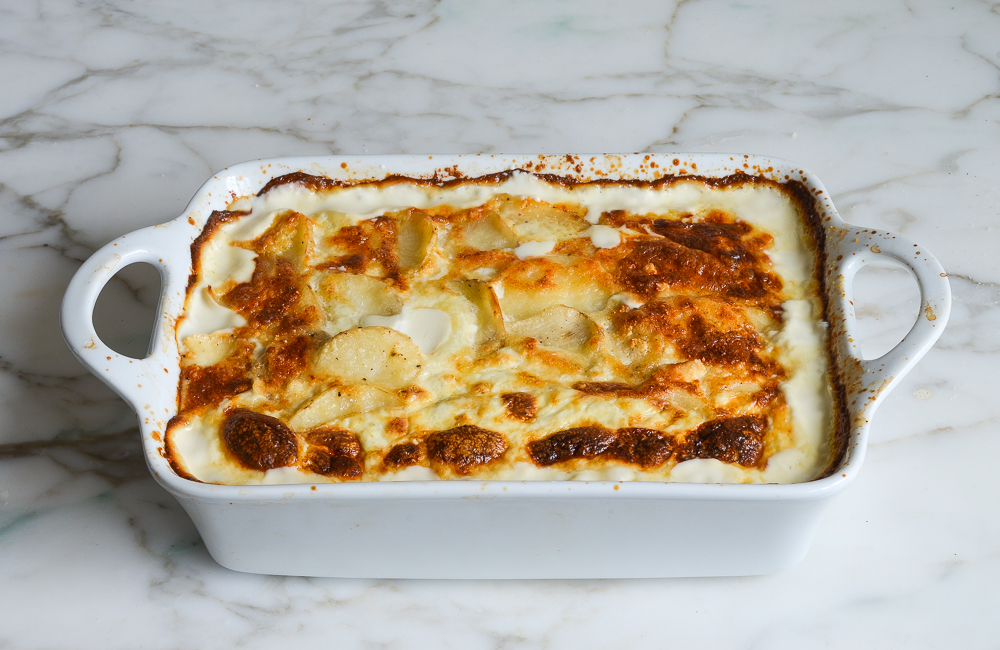
Sprinkle with fresh thyme leaves, if using, and serve. (Note: If you have a large crowd coming and plan to double the dish, you’ll get the best results by baking it in two 2-quart baking dishes instead of one larger dish. The potatoes will cook more evenly that way.)
Frequently Asked Questions
Scalloped potatoes are typically made with thinly sliced potatoes baked in a simple cream or milk sauce, while potatoes au gratin include cheese, like Parmesan, Gruyere, or Cheddar, in the sauce and often have a crispy, cheesy topping. The addition of cheese is the key difference between the two dishes.
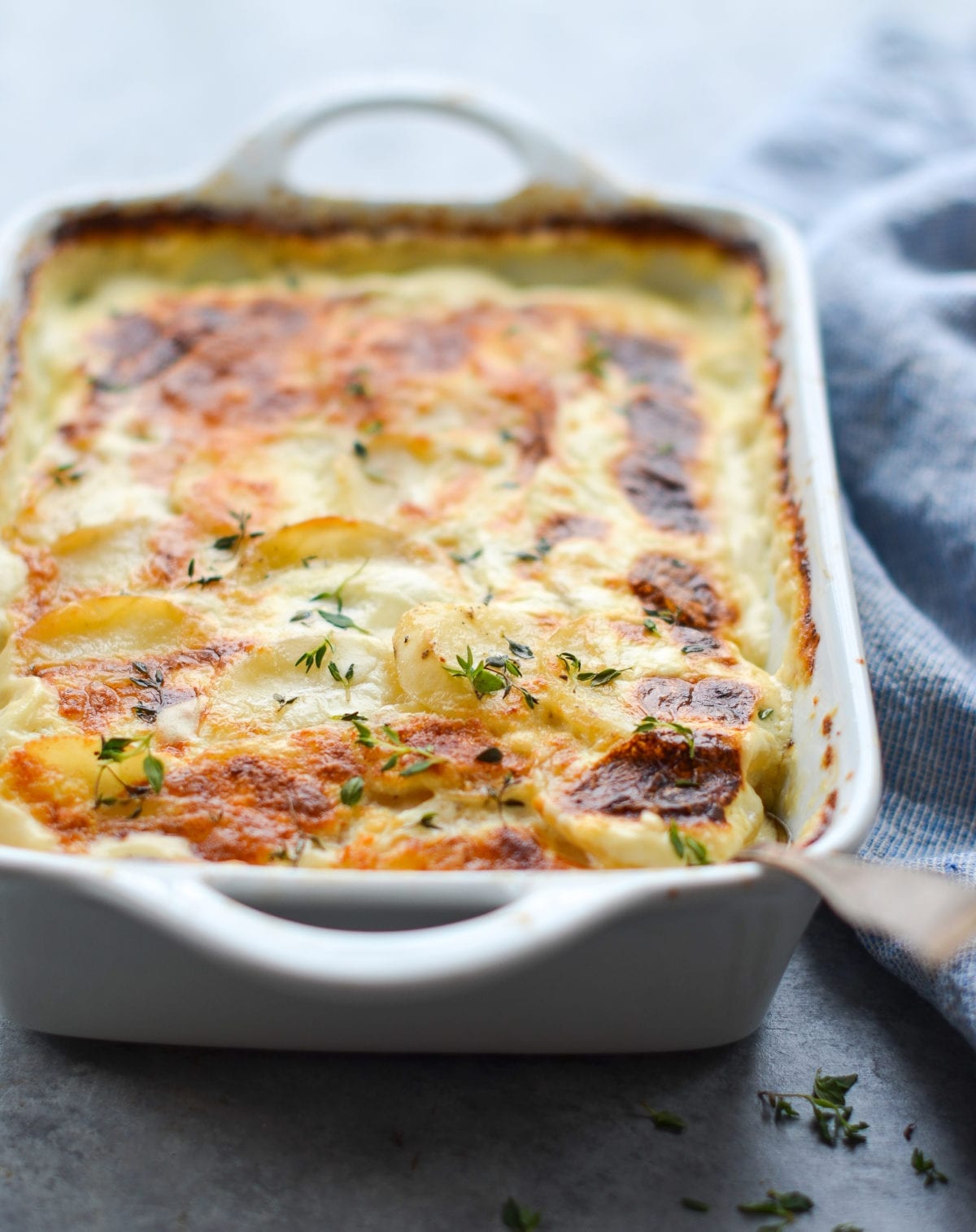
You May Also Like
Potatoes Au Gratin
Creamy, cheesy, and indulgent, this potatoes au gratin recipe is perfect for holiday meals or any dinner that calls for something special.
Ingredients
- Butter to grease the baking dish
- 2½ pounds Russet potatoes (3 to 4), peeled and sliced very thin
- 1½ teaspoons salt
- ¼ teaspoon freshly ground black pepper
- 1 cup (4 oz) finely grated Parmigiano-Reggiano
- 2¼ cups heavy cream
- Fresh thyme, for serving (optional)
Instructions
- Preheat the oven to 350°F and set an oven rack in the middle position. Grease an 8-inch (or 2-quart) baking dish with butter.
- In a large mixing bowl, toss the potatoes with the salt and pepper until evenly coated.
- Arrange some of the potato slices, edges overlapping, in a single layer on the bottom of the prepared baking dish. Sprinkle a quarter of the cheese over the potatoes, and then pour a quarter of the cream over the cheese. Repeat with the remaining potatoes, cheese, and cream, forming 4 layers. Pour any leftover cream over top.
- Place in the oven and bake, uncovered, for 60 to 75 minutes, or until the potatoes are tender when pierced with a knife and golden brown on top. Let the dish settle on the counter for about ten minutes. Sprinkle with fresh thyme, if using, and then serve.
- Make Ahead: If absolutely necessary, this dish can be assembled a day ahead and covered tightly with plastic wrap (pressing the wrap directly against the potatoes so they don’t discolor too much). Store in the refrigerator and bake before serving. Note that the potatoes on top will still discolor a bit in the fridge, but it shouldn't be noticeable after baking.
Nutrition Information
Powered by ![]()
- Per serving (8 servings)
- Calories: 399
- Fat: 29 g
- Saturated fat: 18 g
- Carbohydrates: 28 g
- Sugar: 3 g
- Fiber: 2 g
- Protein: 9 g
- Sodium: 518 mg
- Cholesterol: 101 mg
This website is written and produced for informational purposes only. I am not a certified nutritionist and the nutritional data on this site has not been evaluated or approved by a nutritionist or the Food and Drug Administration. Nutritional information is offered as a courtesy and should not be construed as a guarantee. The data is calculated through an online nutritional calculator, Edamam.com. Although I do my best to provide accurate nutritional information, these figures should be considered estimates only. Varying factors such as product types or brands purchased, natural fluctuations in fresh produce, and the way ingredients are processed change the effective nutritional information in any given recipe. Furthermore, different online calculators provide different results depending on their own nutrition fact sources and algorithms. To obtain the most accurate nutritional information in a given recipe, you should calculate the nutritional information with the actual ingredients used in your recipe, using your preferred nutrition calculator.
Gluten-Free Adaptable Note
To the best of my knowledge, all of the ingredients used in this recipe are gluten-free or widely available in gluten-free versions. There is hidden gluten in many foods; if you're following a gluten-free diet or cooking for someone with gluten allergies, always read the labels of your ingredients to verify that they are gluten-free.

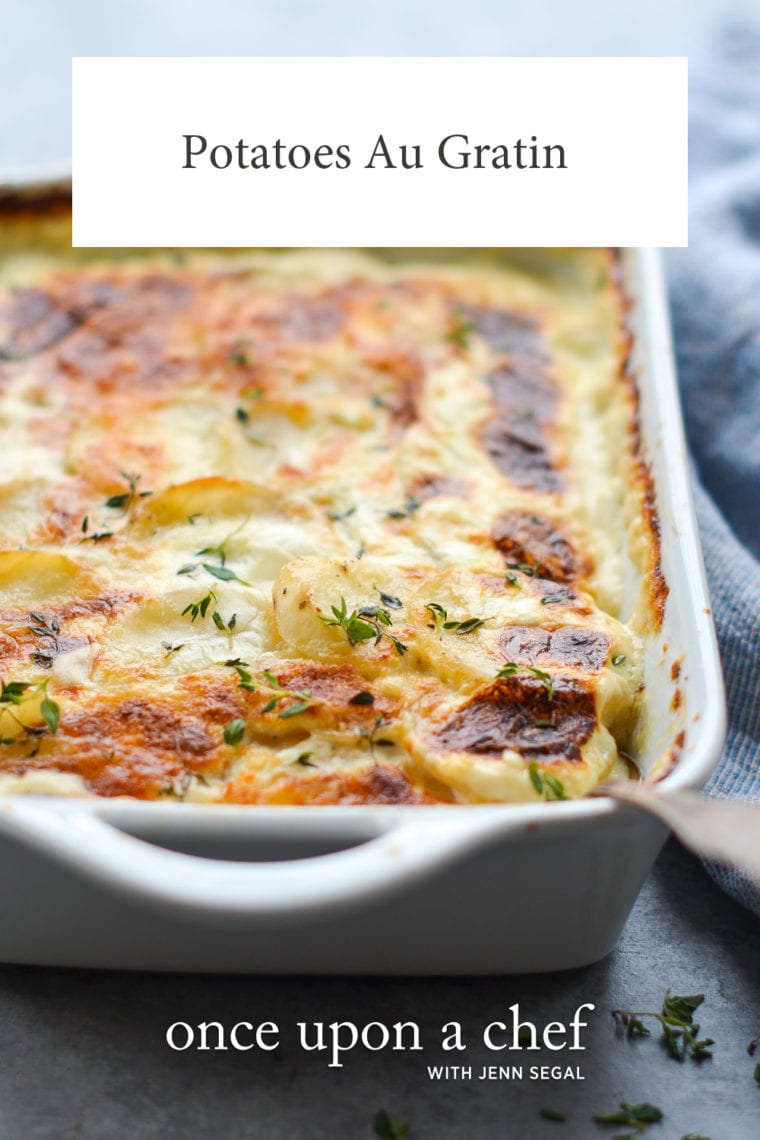
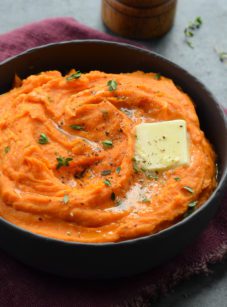
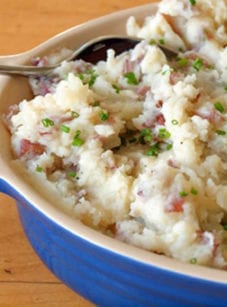
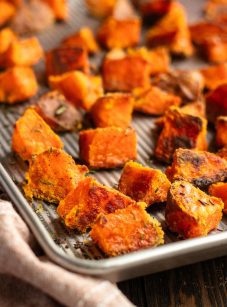
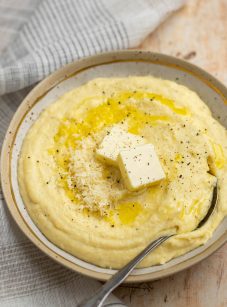
Sadly, this recipe doesn’t tell me how many side servings it provides. I have to make a potato bake for a friend’s dinner party of 7 people. Perhaps just a very small note on how many side servings this recipe produces is a good idea?
And as most of the world is metric, perhaps (in brackets) the metric conversions?
Hi Ofio, You’ll see the number of servings right above the prep time in the recipe box (it serves 6 to 8 so it should be perfect for a group of 7). And the great majority of my recipes (including this one) include conversions to metric/weight measurements. To view them, scroll down to the recipe, and immediately under the recipe title on the right side, you’ll see a little toggle. If you move it from “cup measures” to metric, you’ll see measurements that will work for you. Hope that helps!
I made this and it was very good. I made with a mixture of Gruyere and Swiss cheese. Will definitely make again.
I have made this several times. It always gets rave reviews.
I made your potatoes au gratin yesterday for Easter dinner. It was a success and 2 wives asked for the recipe, which I gladly shared. It was a delicious and very simple dish to make, except for finely grating the Parmesan cheese maybe. 🙂 Your recipe is a keeper and will be made many, many more times in the future. Thank you!!!!
I have made these countless times but find I need to use a larger dish than specified. That’s ok! I use a cast iron french oven and they turn out great. I really should only make a half recipe as I find they don’t reheat very well for me. I also only ever use 2 cups of cream because it comes in 2 cup cartons here. I also just mix the salt and pepper in to the cream- I swear that’s what the recipe used to say. Why get a whole other bowl dirty?
If anyone has a reheating tip, I would appreciate it. They just turn in to an oily mess for me (still tasty) !
Don’t reheat in a microwave unless you first bring it to room temperature and then heat it at 15-20 seconds at a low temperature. Stir it at each interval until it gets warm, not hot. Reheating in a microwave is problematic though. It must be done *really* slowly.
If you don’t want to drive yourself nuts with the microwave, you can also bring it to room temperature and then slowly reheat to warm over simmering water in a double boiler.
However you do it, don’t try to make it hot. That’s when the fat molecules separate. It is possible to reheat it though. I’ve done it before. The end result isn’t as good as the first time it was served, but you have used up leftovers and it’s not separated which is the goal, right? 🙂
Thank you! Apparently I haven’t made this since last Easter. So I missed your reply. I think I’ll just solve the problem and eat them all. Or, the kid h does love them is a teenager now so I’ll just feed him a huge portion. Hehe
Thank you for all the wonderful recipes and facile formatting in your books and online. You are our go to for all recipes!
Cheese Question: We have folks in our family who love their cheddar yet, we’d like to use Gruyere, also. Would this work and if so, what proportions would you use?
So glad you like the recipes – I’m flattered that they are your go-to’s! I haven’t tried it, but I think it would be fine to use a combination of cheddar and Gruyere. I would suggest doing a half cup of each. Please LMK how it turns out!
I was wondering your thoughts of using Gruyere with Parmigiano Reggiano. What would this do to the taste? I’m serving potatoes au gratin this Easter to a large crowd, and had originally purchased Gruyere for a different recipe, till I realized it had flour and I like yours as it’s gluten free. Do these two cheeses go well together, or will they clash? TIA for your response. And thank you for always publishing delicious recipes.
Hi Jeana, This will work well with Gruyere. I haven’t tried it with a combo of the two, but I think you can definitely get away with it. Please LMK how it turns out!
Making these potatoes tomorrow for friends on their 52nd anniversary, along with grilled prime steaks, your haricot verts with shallots. They adore truffles as do we and on one trip together in Italy we went to the truffle fair in San Miniato in November. What a privilege! Could I introduce some of d’Artagnan’s truffle butter in this? Thank you again for such wonderful recipes that work, really, really work. For me, this is unusual in the world of food. And, I am so impressed that you respond to your followers’ comments.
Hi Pat, so glad you like the recipes! If you’d like to add some truffle butter to this, I would add just a bit as the recipe already has a lot of fat in it. You could also use it to butter the baking dish to add some additional truffle flavor. Hope your friends enjoy!
Im planning on making your potatoes au gratin for Easter can i substitute whole or 2% milk
for the cream to make it a little healthier.
Thanks for all the wonderful recipes.
Hi Cindy, So glad you like the recipes! Unfortunately milk won’t work here — sorry!
Simple and delicious! Everyone loved it. Thanks for another great recipe.